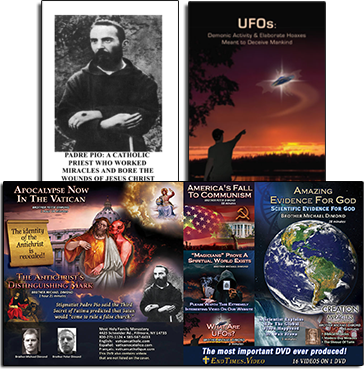June 29, 2006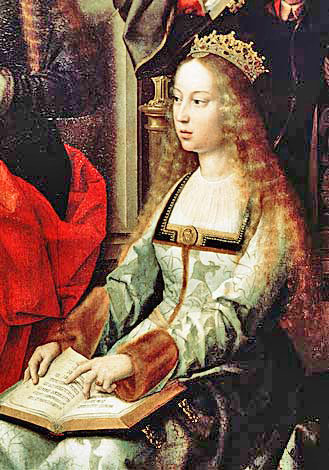
Isabel the Catholic Queen of Spain (15th century), prior to becoming Queen, had to fight for her crown with political schemers who tried to set up rivals to usurp her authority. She also had to ward off many attempts by other political schemers to arrange marriages for her which she didn’t want. When such a marriage with an older hoodlum named Giron had been arranged, and there was no way out of it, Isabel prayed that either she or he would die.
“This time there was no way for Isabel to divide her enemies. Even the Pope had decided against her. Giron would arrive in less than a month. He had proclaimed his intention to marry her immediately. She was trapped…. Marriage to Pedro Giron, lecher and despoiler, as totally opposite to Isabel as any human being could be, was beyond bearing…. What does a Christian do in such a situation? He – or she – prays. And Isabel did pray, as she had prayed never before… ‘Either let him die, or let me die… Either let him die, or let me die…’ Giron was on the march. By April 13, at the head of his mighty host, he had reached El Berrueco… North from El Berrueco rode Giron with his men, into the Sierra Morena, the Dark Mountains…. Across the plain, its grapevines spreading their leaves to the spring sun, until they came to its end at the Sierra de la Virgen, the Mountains of the Blessed Virgin Mary… And there they noticed that Pedro Giron, Master of Calatrava, was swaying in his saddle. They helped him down from his horse. Fever was flaring through his body. His throat was burning and filling with alien matter. He called for water, but he could not drink. The next day he grew worse; the next, worse still. Choking, strangling, cursing God with his last breath because He had not let him live to claim his virgin bride, on the third day Pedro Giron died.
For Jesus Christ is the King of Kings, and the earth is the Lord’s; and prayers to Him are heard. As Isabel the Catholic had always known, and would never forget.” (Isabel of Spain: The Catholic Queen, p. 31.)
June 27, 2006The use of “commonly” in the quote below clearly refers to the fact that the one baptism of water is the remedy of salvation common to both adults and children; in other words, it’s not just for adults or just for children. We’re glad that you reminded us of this, for this fact strengthens the point. There are those who, quoting St. Thomas, argue that baptism of desire is a remedy (i.e. can be a substitute) in the case of adults, but not in the case of children. The Council of Vienne could have very easily said that, but it didn’t. No, it stated that the one water baptism is the common remedy of salvation for adults as well as children.
Further, if the Church ever had an opportunity to pronounce on the doctrine of the “three baptisms,” it was surely at the Council of Vienne. If the Catholic Church teaches “three baptisms,” as they say, why didn’t the Council define these “three baptisms” in this context, rather than declaring the opposite: that there is only one baptism of water? It’s because there aren’t “three baptisms of blood, water and desire,” but only one baptism of water, as this dogmatic Council (not some fallible text or theologian) defined.
Pope Clement V, Council of Vienne, 1311-1312, ex cathedra: “Besides, one baptism which regenerates all who are baptized in Christ must be faithfully confessed by all just as ‘one God and one faith’ [Eph. 4:5], which celebrated in waterin the name of the Father and of the Son and of the Holy Spirit we believe to be commonly the perfect remedy for salvation for adults as for children.”
Regarding
the crash of the editor of Four Marks, of course we’re not asserting that everyone who suffers an accident is punished by God. But in this case it’s our strong opinion that she and her husband were clearly punished by God. Remember that this “stray deer” (which caused the accident) killed her husband at age 54, left her seriously injured, and caused the publication to be delayed (maybe permanently) at the very time when they were preparing it to launch an attack on the necessity of baptism and the Catholic Faith, which would have probably done much damage and caused more confusion with many because it would have been endorsed by some sedevacantists. Is it just a coincidence? We don’t think so.
God was obviously outraged not only by their planned attack on His dogma of the necessity of water baptism for salvation, but also by the fact that they were going to attack the necessity of water baptism while, at the same time, they have on their staff individuals such as Rama Coomaraswamy and
Fr. Kevin Vaillancourt! Consider this astounding hypocrisy. Coomaraswamy has bluntly stated in his writings that many pagans can be saved, and Vaillancourt quotes approvingly from a priest who teaches that there is salvation “outside” the Church.
So, the editor of
Four Marks has no problem with presenting the views of these people to Catholics, but such a problem with the necessity of water baptism that she considers it a heresy to be extirpated! Considering this fact one can obviously see why she was punished by God.
Pope Eugene IV, The Council of Florence, “Exultate Deo,” Nov. 22, 1439: “Holy baptism, which is the gateway to the spiritual life, holds the first place among all the sacraments; through it we are made members of Christ and of the body of the Church. And since death entered the universe through the first man, ‘unless we are born again of water and the Spirit, we cannot,’ as the Truth says, ‘enter into the kingdom of heaven’ [John 3:5]. The matter of this sacrament is real and natural water.”
Moreover, we cannot fail to mention the devilish malice of the obstinate baptism of desire supporters and salvation heretics. Some of them absolutely hate and attack what we’re doing. Why? It’s because we hold that men must be baptized with water and the Holy Ghost to be saved, as the Church has declared. Oh no, they wouldn’t want anyone going around preaching “that wicked heresy” according to which all men must be born again of water and the Holy Ghost. These people are demonic.
June 23, 2006Yes, Pope Paul III does refer to water baptism in that quote. We’ve mentioned this before, but some people don’t seem pay attention to the point. The above canon is a canon on the Sacrament of Baptism (Canones de sacramento baptismi). We repeat: it’s a canon on the Sacrament of Baptism. The so-called “baptism of desire” is not, even according to those who believe in it, a sacrament:
Fr. Laisney, Is Feeneyism Catholic?, baptism of desire advocate, p. 9: “Baptism of Desire is not a sacrament; it does not have the exterior sign required in the sacraments. The theologians, following St. Thomas… call it ‘baptism’ only because it produces the grace of baptism… yet it does not produce the sacramental character.”
Since only water baptism is the sacrament, Pope Paul III does define that
water baptism is necessary for salvation without exception by defining that the sacrament is necessary for salvation without exception. This refutes what you stated above.
To your second point, that the Catholic Church has allowed other forms of baptism, that is simply not true. Certain men have fallibly theorized such, but the Catholic Church hasn’t taught it. In fact, your statement that there are other forms of baptism contradicts the defined teaching of the Catholic Church that there is only one form of baptism, which is celebrated in water.
Pope Clement V, Council of Vienne, 1311-1312, ex cathedra: “Besides, one baptism which regenerates all who are baptized in Christ must be faithfully confessed by all just as ‘one God and one faith’ [Eph. 4:5], which celebrated in waterin the name of the Father and of the Son and of the Holy Spirit we believe to be commonly the perfect remedy for salvation for adults as for children.”
June 21, 2006A few of our readers have asked us about a new sedevacantist newspaper called Four Marks. This newspaper is run by a woman and a block of heretical contributors who are adamant supporters of baptism of desire and groups which believe that souls can be saved in false religions (or accept as Catholic those who do). A reader of ours wrote to K. Plumb, the editor of this newspaper, to ask her about the salvation issue and our material. On May 30, this reader forwarded Plumb’s reply to us, which included:
“Br. Dimond hasn’t contacted me, and although I am impressed by his efforts and knowledge, it is much like a Baptist who knows his chapter and verse, but not what the Bible says.”
So, a few weeks ago the editor of Four Marks compared one of us to a Baptist for our adherence to the necessity of the Catholic Faith and water baptism for salvation. She also indicated in the same e-mail that “another article planned on this topic [the baptism of desire issue] (by another writer) is scheduled for the July issue. There are other articles on this same topic that we may reprint. That is being discussed.” So, she was planning on printing another attack on baptism by one of her stable of heretical writers in July, which almost surely would have included the typical distortions, half-truths, omissions, etc., etc. that characterize the works of the salvation heretics.
Well, K. Plumb won’t be printing that attack on baptism in the July issue. She and her husband were just involved in a serious car accident, which left her with broken bones and her husband on life support. According to the family, “there will, undoubtedly, be a delay on the paper.” Hopefully it’s a permanent delay. Is it just a coincidence that this very serious car accident occurred just prior to the publication of the July issue, in which she planned to again attack the necessity of baptism and further spread the snare of salvation heresy? We think not. People need to realize that God detests such phonies and what they do. God desires their conversion, but those heretics who think they are traditional Catholics while they attack the necessity of baptism and Fr. Feeney, and while they endorse all kinds of groups which believe in salvation for members of non-Catholic religions, are phony abominations. And that’s exactly the kind of heretic that runs and contributes to this new heretical newspaper, which Catholics should shun if it ever gets back up and running.
June 19, 2006[mhfmvid id="M1mydZuZsKI" quality="mqdefault"]
Many Catholics are aware that on June 17, 1689, Our Lord revealed to Saint Margaret Mary Alacoque that He wanted the King of France, Louis XIV, to consecrate France to the Sacred Heart of Jesus. The Kings of France delayed, and did not obey. 100 years later to the day, on June 17, 1789, King Louis XVI was stripped of his legislative authority by the upstart Third Estate, and four years later the soldiers of the French Revolution executed the King of France (Louis XVI) as if he were a criminal.
What’s very interesting is that after the monarchy had been overthrown by the incredibly dark forces of the French Revolution, which culminated with the execution of thousands of Catholics and the official abolition of Christianity in France – a horrible punishment which God allowed because the Kings of France had refused to honor His Sacred Heart – the sinister leaders of the French Revolution found themselves honoring a different heart. Jean-Paul Marat was one of the most loathsome figures of the French Revolution. He was one of the most anti-catholic and fiercest advocates of terror, who stirred the revolutionaries up to violence in his newspaper The Friend of the People. In Marat’s newspaper, one would frequently read such things as: “… split the tongues of the priests who have preached servitude.” At one point during the French Revolution, Marat was stabbed to death by Charlotte Corday. He became the “martyr” for the Revolution. After Marat’s death:
“On July 16 an immense and blasphemous public funeral was held for Marat. A huge procession followed his already decomposing body, with many chanting ‘O heart of Jesus; O sacred heart of Marat!’… his heart was cut out and placed in a porphyry urn suspended from the ceiling of the Club. During the rest of the Terror, every meeting of the Codeliers Club was held under Marat’s heart.” (Warren H. Carroll, The Guillotine and The Cross, Christendom Press, p. 121.)
It’s extremely interesting that the wicked leaders of the French Revolution honored and held their meetings under the heart of Marat. The demonic symbolism and substitution should be obvious: since the heart of Jesus was rejected by the leadership of France, God allowed Catholic France to be overtaken by one of the wickedest movements the modern world has ever known, which abolished the Catholic Faith and replaced the honor due to His heart with honor to the heart of the execrable Marat.
June 17, 2006Thanks for your question. Defenders of Vatican II have bent over backwards to attempt to reconcile its teaching with traditional Catholic teaching. As is the case with many issues, such as creation vs. evolution, etc. individuals attempt to confuse matters by distorting issues. For instance, a subtle distortion of a fossil can create an entire line of false belief in evolution. The same is true with this issue of religious liberty. It is true to say that unless a person understands the issue of religious liberty and its details he or she can be misled by these – sometimes subtle – distortions. Let’s take a look at one of them.
Many of the defenders of Vatican II’s teaching on religious liberty point out that the Catholic Church doesn’t force or coerce an unbeliever to be a Catholic, since belief is, by definition, a free act of the will. This is very true.
Pope Leo XIII, Immortale Dei (#36), Nov. 1, 1885: “And, in fact, the Church is wont to take earnest heed that no one shall be forced to embrace the Catholic faith against his will, for, as St. Augustine wisely reminds us, ‘Man cannot believe otherwise than of his own will.’”
They say, therefore, that Vatican II’s teaching on religious liberty was simply a repetition of this truth that the Church doesn’t force an unbeliever to be Catholic. This is what
Patrick Madrid argued in his book,
Pope Fiction.
Patrick Madrid, Pope Fiction, p. 277: “Notice the Declaration [on religious liberty] endorses not a general freedom to believe whatever you want, but rather, a freedom from being coerced into believing something. In other words, no one is to be forced to submit to the Catholic Faith.”
A person who is familiar with Vatican II’s teaching on religious liberty would probably detect the subtle distortion in the Madrid argument. Yet, we can see how those who are unfamiliar with the issue might be taken in by such an argument. The truth is, contrary to the claims of Patrick Madrid and others, Vatican II didn’t merely teach that the Catholic Church doesn’t force or coerce an unbeliever to be a Catholic. If that’s all it taught on that point, it wouldn’t have been heretical (on that point).
Rather, Vatican II taught that
States don’t have the right to put down the public expression and propagation and practice of false religions (because
the civil right to religious liberty should be universally recognized). Again, we must understand the distinction between the two different issues which the dishonest defenders of Vatican II sometimes attempt to conflate:
First issue) the Catholic Church doesn’t force or coerce a nonbeliever to believe, since belief is free –
true;
Second issue) the State cannot repress the public expression of these false religions – this is where Vatican II contradicts the Catholic Church on religious liberty. The second issue is the key.
The Catholic Church teaches infallibly that States can and must (unless the regime were threatened by doing it or it were not within its reasonable power or a greater evil would result) put down the public expression and propagation of false religions. The contrary was condemned in the Syllabus of Errors.
Pope Pius IX, Syllabus of Errors, Dec. 8, 1864, # 77: “In this age of ours it is no longer expedient that the Catholic religion should be the only religion of the state, to the exclusion of all other cults whatsoever.” – Condemned.
We can see that the idea that the State cannot exclude the other religions is condemned. To understand this better let’s give an example: If a State were presented, for instance, with Muslims and Jews holding their religious services and celebrations in a public place (even if they were not disturbing the peace or infringing on any private property or upsetting the public order at all), the State could and should (according to Catholic teaching) repress these services and celebrations and send the Jews and Muslims home (or would arrest them, if the law were well established) since they scandalize others and could cause others to join these false religions. The State would tell them their obligation to be Catholic before God and try to convert them by directing them to the Catholic priests, but it wouldn’t force them to do so. This is an example of the clear distinction between 1) forcing one to be Catholic, something the Church condemns, since belief is free and 2) the State’s right to repress false religious activity, something the Church teaches.
Pope Pius IX, Syllabus of Errors, # 78: “Hence in certain regions of Catholic name, it has been laudably sanctioned by law that men immigrating there be allowed to have public exercises of any form of worship of their own.” – Condemned.
But Vatican II teaches just the opposite. Below we will quote a passage that is the clearest heresy of Vatican II on religious liberty.
This passage cuts through all of the heretics’ attempts to distort and confuse what the religious liberty issue is and what Vatican II taught about it – so use it whenever you are debating this issue. (There are other subtle distortions on this issue of religious liberty which we may discuss in a future post). But
this passage below from Vatican II is utterly indefensible and cuts through all of their attempted distortions. It is the clearest heresy of Vatican II on religious liberty, and probably the third clearest heresy in all of Vatican II.
Vatican II Document, Dignitatis humanae # 3: “So the state, whose proper purpose it is to provide for the temporal common good, should certainly recognize and promote the religious life of its citizens. With equal certainty it exceeds the limits of its authority, if it takes upon itself to direct or to prevent religious activity.”
Here Vatican II says that the State exceeds its authority if it dares to direct
or prevent religious activity. We just saw above that the Syllabus of errors condemned the idea that State cannot prevent the activity of other religions. This proves that Vatican II’s teaching on religious liberty was clearly false and heretical.

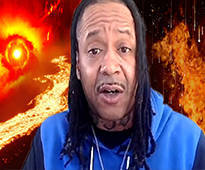
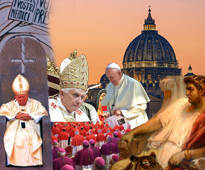
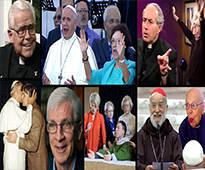
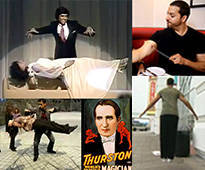
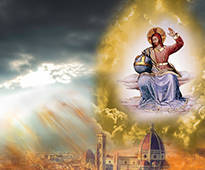

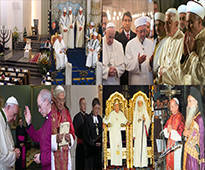
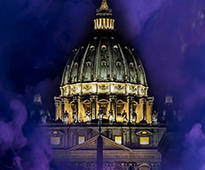

 " />
" /> " />
" />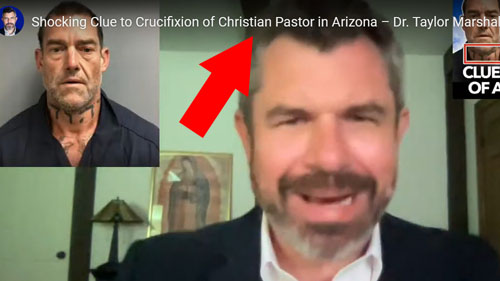 " />
" />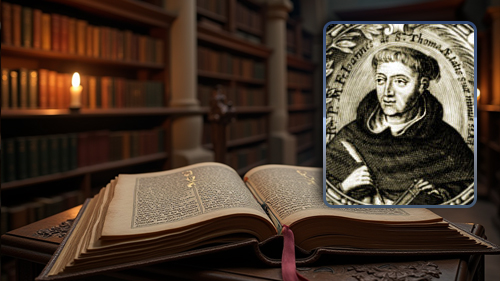 " />
" />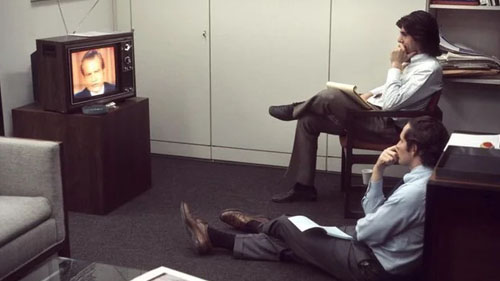 " />
" />





